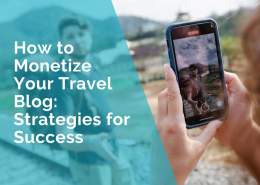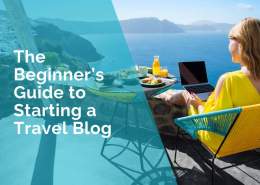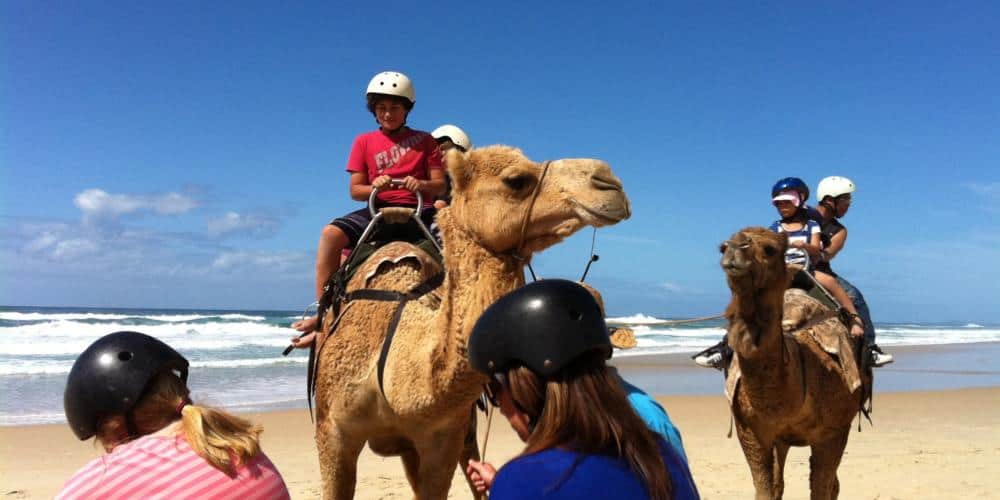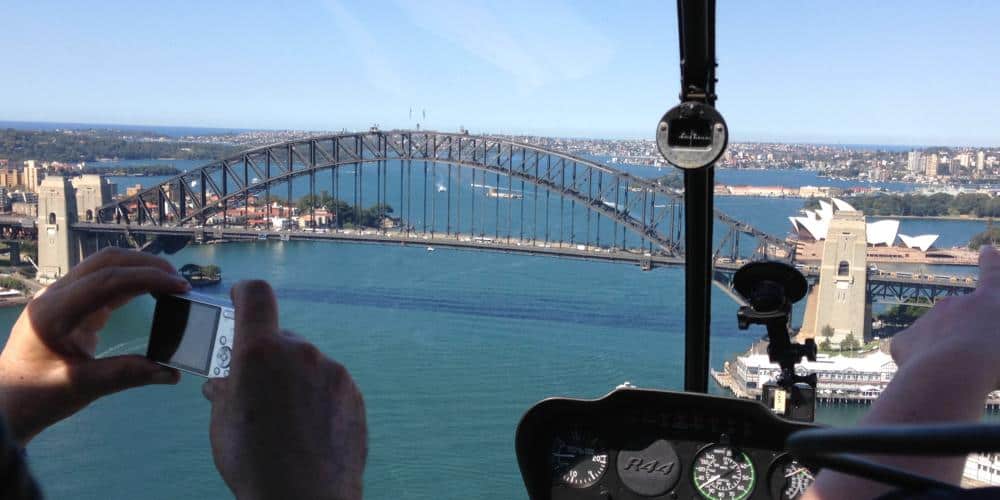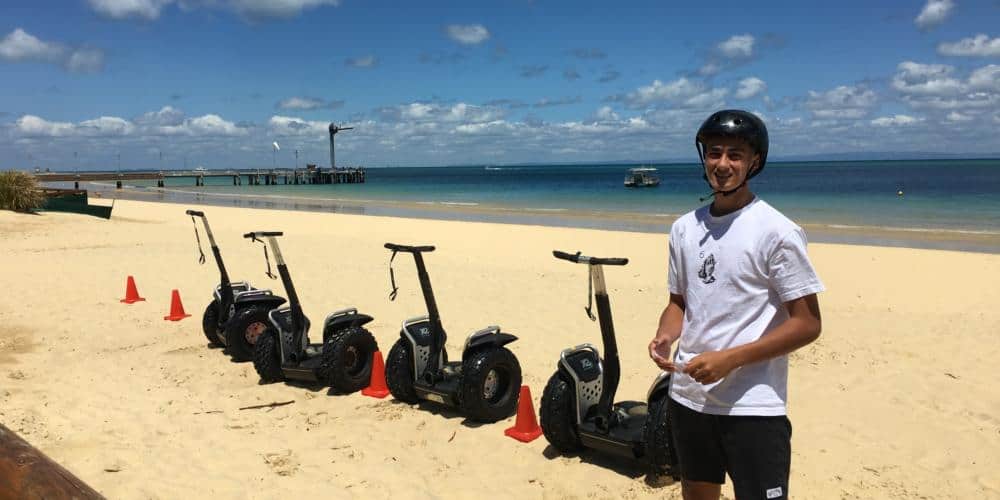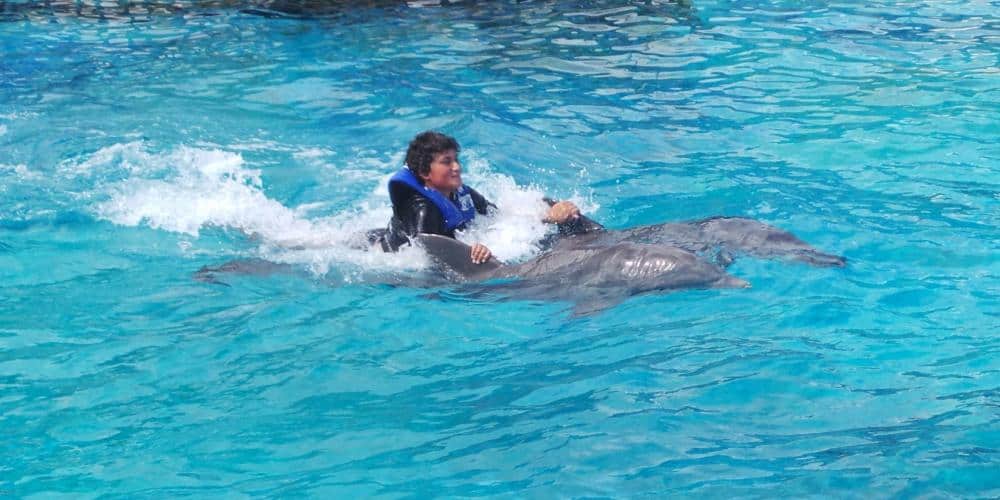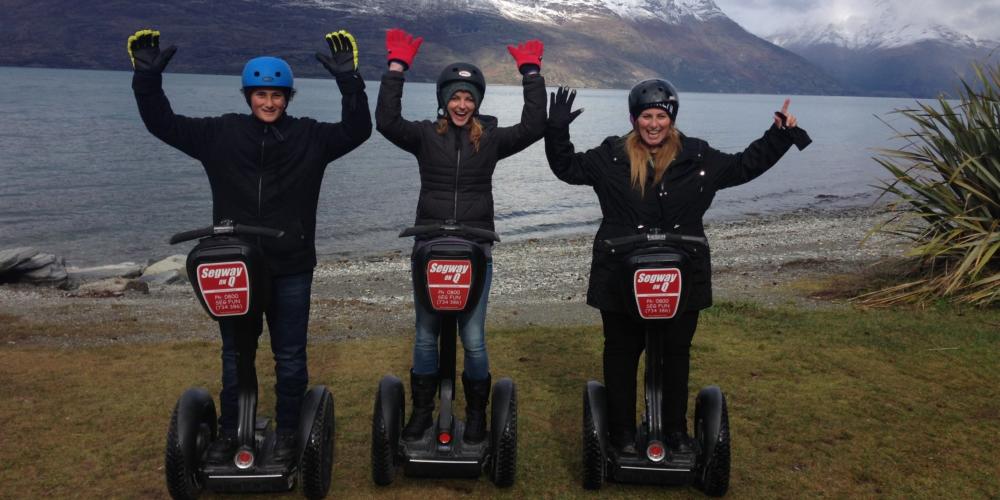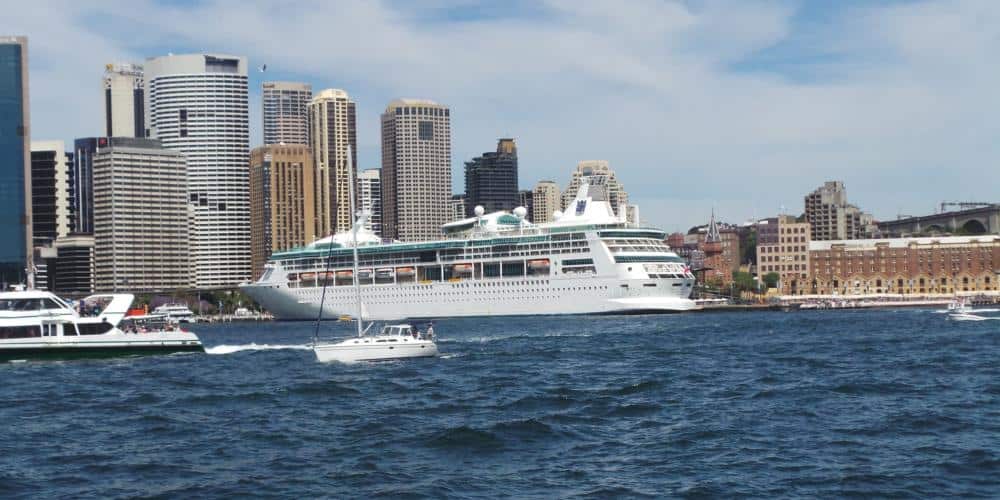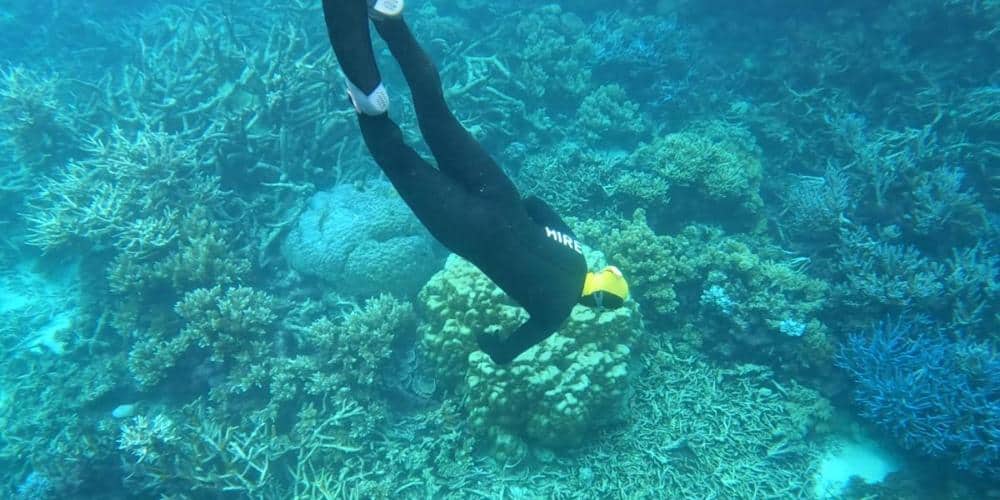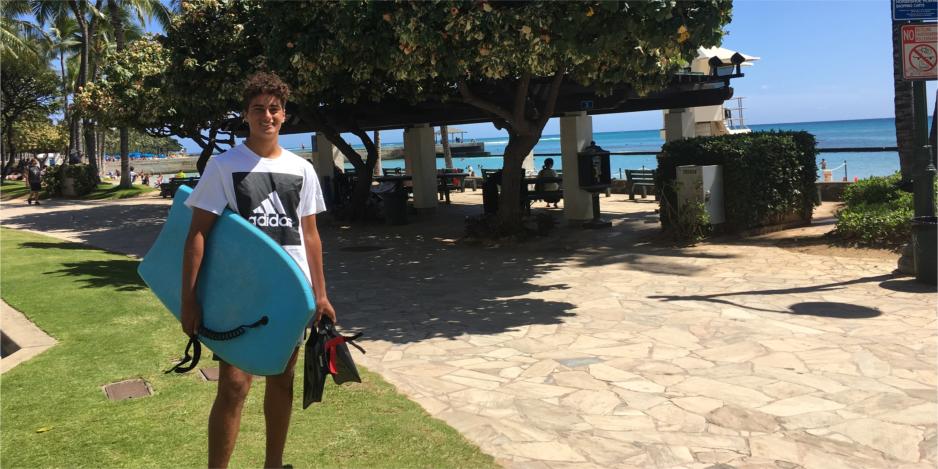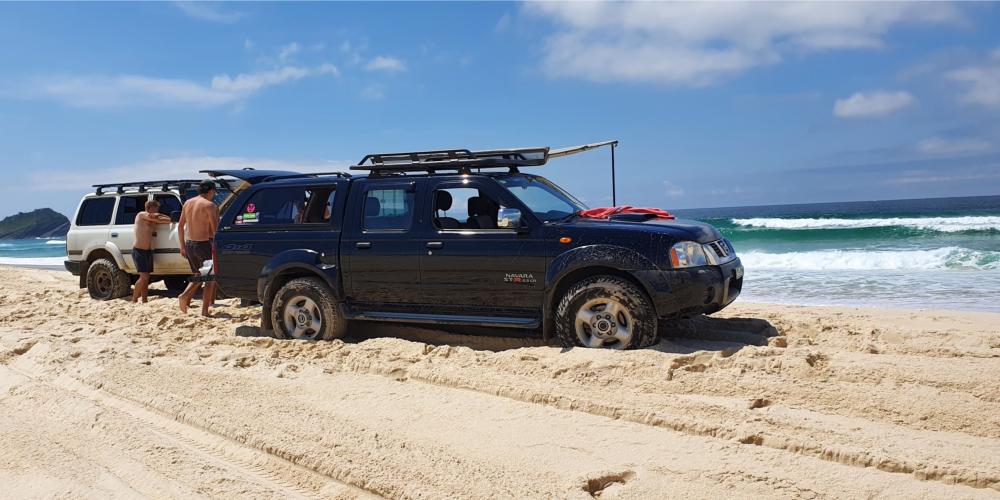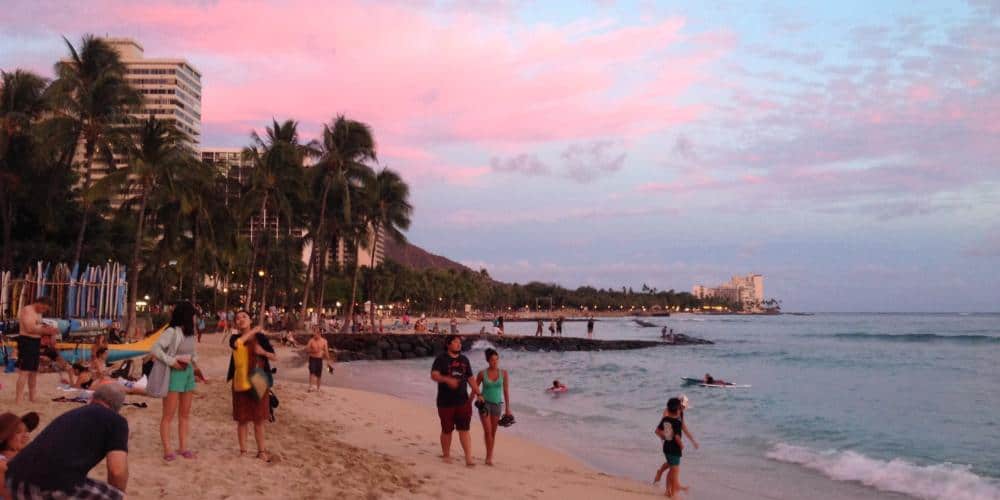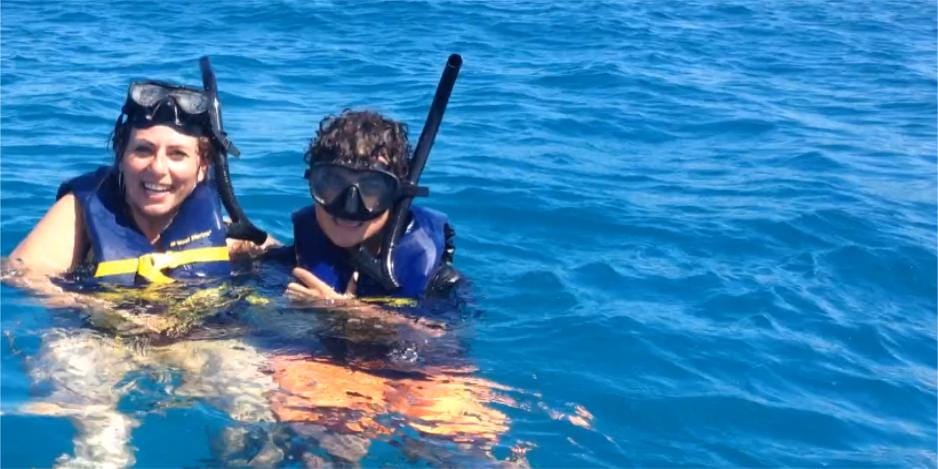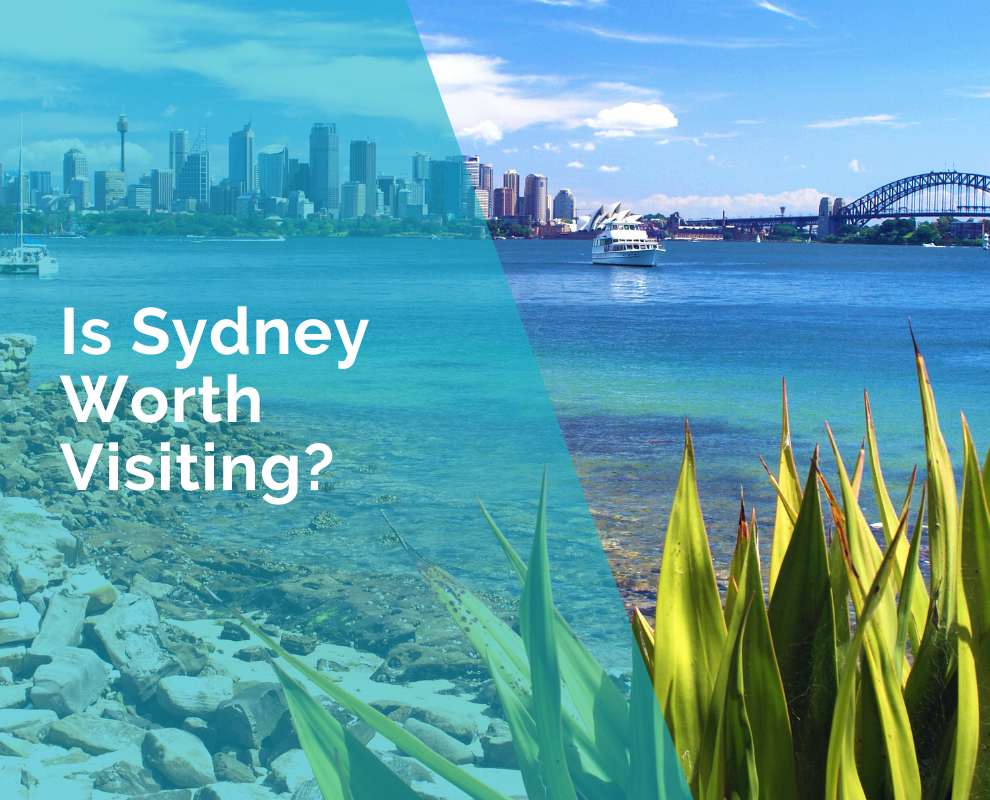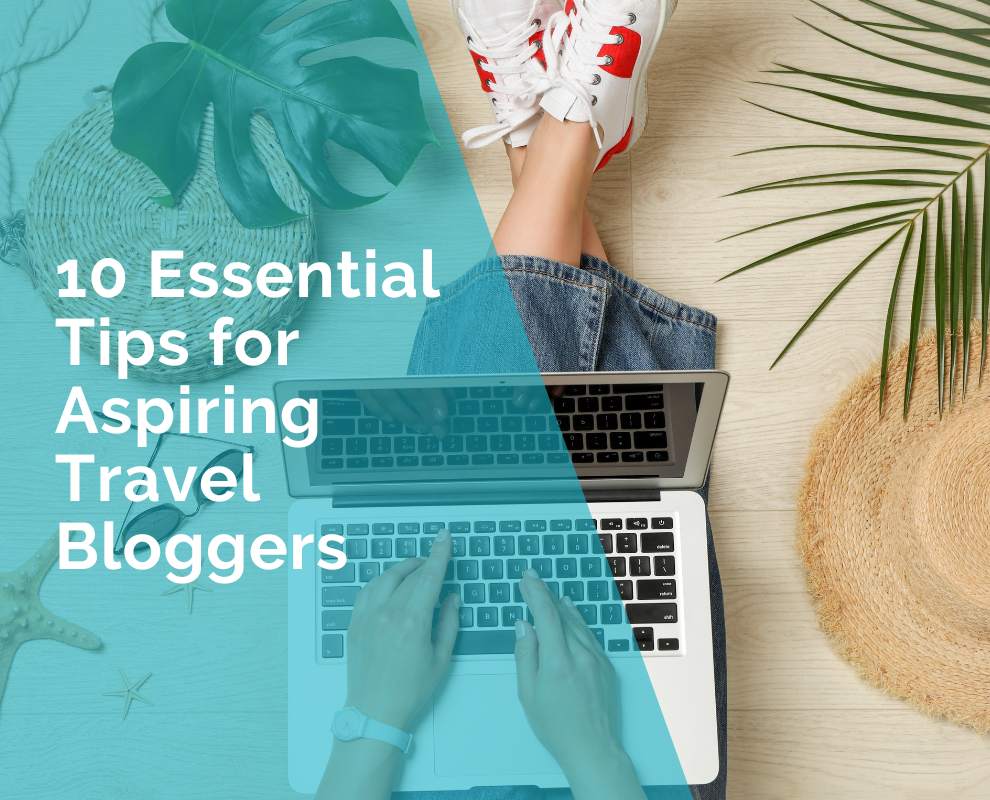The Beginner’s Guide to Starting a Travel Blog
Imagine yourself sitting by a cozy fireplace, flipping through the pages of a travel magazine filled with captivating stories and breathtaking photographs.
Now, picture that magazine coming to life, with you as the author, photographer, and editor-in-chief. That’s essentially what a travel blog is – your own digital sanctuary where you share your travel tales, tips, and triumphs with the world.
Let’s say you’re an intrepid explorer named Alex. You’ve always had a passion for travel, and you dream of visiting every corner of the globe. So, you decide to start a travel blog called “Wanderlust Diaries,” where you chronicle your adventures, from hiking through lush rainforests to savouring street food in bustling markets.
Through your blog, you invite readers to join you on your journey and experience the wonders of the world through your eyes.
Importance and Benefits of Starting a Travel Blog
Why should you start a travel blog? For starters, it’s a fantastic way to share your passion for travel with others. Whether you’re a seasoned globetrotter or a newbie wanderer, your travel blog allows you to express your love for exploration and discovery.
Think about the memories you’ve made on your travels – the awe-inspiring landscapes, the unforgettable encounters, the moments of pure joy. Your travel blog becomes a digital scrapbook where you can immortalize those memories and share them with the world.
But it’s not just about preserving your experiences – it’s also about inspiring others to embark on their own adventures. Your stories have the power to ignite wanderlust in others, encouraging them to step out of their comfort zones and explore new destinations.
Plus, starting a travel blog opens up a world of opportunities. From connecting with fellow travelers to collaborating with travel brands and publications, your blog can pave the way for exciting professional ventures.
Finding Your Niche
Defining Your Target Audience
First things first, let’s talk about your audience – the people who will eagerly devour your travel tales and eagerly await your next adventure. To define your target audience, think about who you want to reach with your blog. Are you targeting solo travelers looking for budget-friendly tips? Adventure seekers in search of adrenaline-pumping experiences? Family vacationers seeking kid-friendly destinations?
For instance, let’s say you’re passionate about sustainable travel practices. Your target audience might include eco-conscious travelers who are interested in minimizing their environmental impact while exploring the world. By understanding the preferences, interests, and needs of your audience, you can tailor your content to resonate with them and build a loyal following.
Identifying Your Unique Angle or Perspective
What sets your travel blog apart from the sea of others out there? It’s your unique angle or perspective – the special sauce that makes your blog stand out from the crowd. Perhaps you have a knack for storytelling and can weave captivating narratives that transport readers to far-off lands. Or maybe you’re a photography whiz who can capture the essence of a destination with stunning visuals.
Take, for example, the rise of “slow travel” blogs, where bloggers focus on immersing themselves in local cultures and savoring every moment of their journey. By adopting this unique perspective, these bloggers offer readers a deeper, more authentic travel experience that goes beyond the typical tourist attractions.
Researching Popular Travel Blog Niches
Before you dive headfirst into the world of travel blogging, take some time to research popular niches within the travel industry. From luxury travel to budget backpacking, there’s a niche for every type of traveler out there. By studying successful travel blogs in different niches, you can gain insights into what resonates with audiences and identify gaps or opportunities that you can capitalize on.
For instance, suppose you’re passionate about adventure travel. You might research popular adventure travel blogs to see what types of content perform well and what topics are trending. From epic hiking trails to thrilling water sports, you can gather inspiration from established bloggers while putting your own unique spin on the genre.
Choosing a Niche That Aligns With Your Interests and Expertise
When it comes to choosing a niche for your travel blog, it’s essential to select something that aligns with your interests, expertise, and passions. After all, you’ll be spending a significant amount of time researching, writing, and sharing content within your chosen niche, so it’s crucial to pick something that you genuinely enjoy.
For example, let’s say you’re a foodie at heart who loves exploring local cuisines wherever you go. Your niche might revolve around culinary travel, where you share mouthwatering food experiences from around the world, along with insider tips on the best eateries and hidden culinary gems. By focusing on a niche that aligns with your interests and expertise, you’ll be more motivated and enthusiastic about creating content for your blog.
Setting Up Your Blog
Selecting a Domain Name and Hosting Platform
Your domain name is your blog’s address on the internet – it’s what people type into their browsers to find your site. When choosing a domain name, aim for something memorable, easy to spell, and reflective of your blog’s content or theme. Think of it as your online identity, so choose wisely!
For example, imagine you’re starting a travel blog focused on off-the-beaten-path destinations. Your domain name could be something like “WanderlustExplorer.com” or “HiddenGemsTraveler.com” – both catchy and descriptive of your niche.
Once you’ve settled on a domain name, it’s time to choose a hosting platform. Hosting is like renting space on the internet to store your website files and make them accessible to visitors. There are many hosting providers out there, each offering different features and pricing plans. Do your research to find one that suits your needs and budget.
Choosing a Blogging Platform
Now that you have a domain name and hosting sorted out, it’s time to choose a blogging platform to build your website. There are several options available, but two of the most popular ones are WordPress and Blogger.
WordPress is a versatile and customizable platform that powers millions of websites worldwide. It offers a wide range of themes and plugins to customize your site and is suitable for both beginners and advanced users.
On the other hand, Blogger is a straightforward blogging platform owned by Google. It’s easy to use and perfect for beginners who want to get started quickly without dealing with technical complexities.
Consider your technical skills, design preferences, and long-term goals when choosing a platform. Whichever you choose, make sure it aligns with your needs and allows you to create the website you envision.
Designing Your Blog Layout and Aesthetics
The design of your blog plays a crucial role in shaping the user experience and leaving a lasting impression on visitors. When designing your blog layout and aesthetics, keep it clean, organized, and visually appealing.
Think about the overall look and feel you want to convey – whether it’s minimalist and modern or vibrant and eclectic. Choose a color scheme, typography, and imagery that reflect your brand and resonate with your target audience.
For example, if you’re running a fashion blog, you might opt for a sleek and stylish design with high-quality images showcasing the latest trends. On the other hand, if you’re running a parenting blog, you might choose a warm and inviting design with playful accents and family-friendly imagery.
Remember to prioritize readability and navigation ease, ensuring that visitors can find what they’re looking for quickly and enjoyably.
Customizing Your Blog for Optimal User Experience
Once you’ve set up your blog’s basic layout and aesthetics, it’s time to customize it further for optimal user experience. This includes fine-tuning settings, adding essential features, and optimizing for performance and accessibility.
Consider adding features like a search bar, categories and tags, social media integration, and a contact form to enhance usability and engagement. Pay attention to site speed, mobile responsiveness, and SEO best practices to ensure that your blog is user-friendly and search engine-friendly.
For instance, you might install a caching plugin to improve load times, optimize images for faster loading, and use responsive design principles to ensure your blog looks great on all devices.
By customizing your blog with user experience in mind, you’ll create a seamless and enjoyable browsing experience for your visitors, encouraging them to stay longer and explore more of your content.
Hire a Website Designer
If you’re not tech-savvy or simply prefer to focus on creating content rather than dealing with the technical aspects of website setup, hiring a website designer can be a smart investment. A professional designer can help you bring your vision to life, ensuring that your blog looks polished and professional from the get-go.
When hiring a website designer, look for someone with experience in building blogs and websites, particularly in your niche. Review their portfolio to see examples of their previous work and ensure that their design style aligns with your vision for your blog.
Communicate your goals, preferences, and expectations clearly with the designer, and be open to their suggestions and feedback. A good designer will work collaboratively with you to create a website that not only looks great but also functions smoothly and meets your needs.
While hiring a website designer may require an upfront investment, the time and stress saved can be well worth it in the long run. With a professionally designed blog, you can establish a strong online presence and make a memorable first impression on your audience.
Creating Compelling Content
Understanding the Importance of High-Quality Content
High-quality content is the lifeblood of your travel blog. It’s what keeps readers coming back for more and sets you apart from the countless other blogs vying for their attention. But what exactly is high-quality content, and why does it matter?
Think of high-quality content as a delicious meal at your favorite restaurant – it’s well-prepared, flavorful, and leaves you craving more. Similarly, high-quality content is well-researched, engaging, and adds value to your readers’ lives.
For example, consider a food blog that features mouthwatering recipes with step-by-step instructions and stunning food photography. Each post is meticulously crafted to provide readers with useful information and inspire them to try new dishes in their own kitchens.
High-quality content not only attracts readers to your blog but also helps you build credibility and authority in your niche. When readers trust your expertise and rely on your recommendations, they’re more likely to become loyal followers and advocates for your blog.
Brainstorming Content Ideas and Topics
Now that you understand the importance of high-quality content, it’s time to brainstorm ideas and topics for your travel blog. The key is to think beyond the obvious and explore unique angles and perspectives that will captivate your audience.
Start by considering your niche and target audience. What topics are they interested in? What questions do they have? What challenges are they facing? By addressing their needs and interests, you can create content that resonates with them and keeps them coming back for more.
For example, suppose you’re running a travel blog focused on sustainable tourism. Your content might include tips for reducing your carbon footprint while traveling, profiles of eco-friendly destinations, and interviews with local conservationists.
You can also draw inspiration from your own experiences and adventures. Think about the places you’ve visited, the people you’ve met, and the lessons you’ve learned along the way. Share your stories, insights, and recommendations with your readers, inviting them to join you on your journey.
Developing Your Writing Style and Voice
Your writing style and voice are what give your travel blog its unique personality and charm. Whether you’re witty and humorous, thoughtful and introspective, or informative and authoritative, your voice should reflect who you are and what you stand for as a blogger.
For example, imagine you’re writing a travel blog aimed at budget-conscious backpackers. Your writing style might be casual and conversational, with a touch of humor and sarcasm thrown in for good measure. You want your readers to feel like they’re chatting with a friend over a pint at the hostel bar, swapping travel stories and trading tips.
Experiment with different writing styles and tones until you find the one that feels most authentic to you. Don’t be afraid to let your personality shine through in your writing – after all, that’s what will set your blog apart from the rest.
Incorporating Engaging Visuals (Photos, Videos, Infographics)
In addition to written content, incorporating engaging visuals is essential for capturing your readers’ attention and bringing your travel experiences to life. Whether it’s breathtaking landscapes, mouthwatering meals, or candid snapshots of local life, visuals add depth and richness to your blog posts.
For example, imagine you’re writing a blog post about your recent trip to Japan. Instead of just describing your experiences in words, you could include a photo gallery showcasing the stunning cherry blossoms in full bloom, the bustling streets of Tokyo, and the serene temples of Kyoto.
Incorporate a variety of visual elements into your blog posts, including photos, videos, and infographics, to cater to different preferences and enhance the overall reading experience. Experiment with different formats and techniques to find what works best for your blog and your audience.
Remember to optimize your visuals for web viewing by resizing and compressing images for faster loading times. Captions and alt text are also important for providing context and accessibility for readers who may be using screen readers or have slow internet connections.
By incorporating engaging visuals into your blog posts, you’ll not only capture your readers’ attention but also immerse them in your travel experiences and inspire them to embark on their own adventures.
Building Your Audience
Utilizing Social Media to Promote Your Blog
Social media is a powerful tool for connecting with your audience, expanding your reach, and driving traffic to your travel blog. Platforms like Instagram, Facebook, Twitter, and Pinterest offer endless opportunities to showcase your content, engage with followers, and attract new readers.
For example, let’s say you’ve just published a blog post about your recent hiking adventure in the Swiss Alps. You can share stunning photos from your trip on Instagram, along with a teaser caption and a link to your blog for readers to learn more. On Facebook and Twitter, you can share behind-the-scenes stories and insights from your travels, sparking conversations and inviting readers to join the discussion.
To make the most of social media, create a content calendar to plan and schedule your posts, ensuring consistency and visibility. Use hashtags relevant to your niche and target audience to increase discoverability and reach. Engage with your followers by responding to comments, asking questions, and sharing user-generated content to foster a sense of community and connection.
Networking with Other Travel Bloggers and Influencers
Networking with other travel bloggers and influencers is a valuable strategy for building relationships, gaining exposure, and collaborating on mutually beneficial projects. By connecting with like-minded individuals in your niche, you can tap into their audience and leverage their expertise to grow your own blog.
For example, consider reaching out to fellow travel bloggers to exchange guest posts, participate in joint giveaways, or co-host Instagram takeovers. By cross-promoting each other’s content, you can reach new audiences and build credibility within the travel community.
Attend industry events, conferences, and meetups to network with influencers and brands in person. Forge genuine connections and offer value to others without expecting anything in return. Remember, networking is about building relationships, not just transactional exchanges.
Implementing SEO Strategies to Improve Search Visibility
Search engine optimization (SEO) is essential for improving your blog’s visibility and ranking higher in search engine results pages (SERPs). By optimizing your content for relevant keywords and phrases, you can attract organic traffic from search engines like Google and Bing.
For example, suppose you’re writing a blog post about the best snorkeling spots in Hawaii. Research keywords related to snorkeling in Hawaii, such as “best snorkeling spots in Hawaii,” “Hawaii snorkeling guide,” and “top snorkel sites in Hawaii.” Incorporate these keywords naturally into your content, including headings, subheadings, and meta tags, to improve your chances of ranking for those search queries.
In addition to keyword optimization, focus on creating high-quality, informative content that satisfies user intent and provides value to your readers. Improve your website’s technical SEO by optimizing page speed, mobile responsiveness, and site structure. Build backlinks from reputable websites in your niche to increase your domain authority and credibility in the eyes of search engines.
Encouraging Reader Engagement and Interaction
Engaging with your readers is crucial for building a loyal and dedicated audience for your travel blog. Encourage reader interaction by inviting them to leave comments, ask questions, and share their own travel experiences on your blog posts and social media channels.
For example, include a call-to-action at the end of each blog post, inviting readers to share their thoughts, recommendations, or travel tips in the comments section. Respond promptly to comments and messages, showing appreciation for their engagement and fostering a sense of community.
Host interactive features such as polls, quizzes, and contests to encourage participation and spark conversations among your audience. Share user-generated content, such as photos and testimonials from readers who have been inspired by your blog, to showcase the impact of your work and make readers feel valued and appreciated.
By prioritizing reader engagement and interaction, you’ll create a vibrant and active community around your travel blog, where readers feel connected, supported, and inspired to embark on their own adventures.

Monetization Strategies
Exploring Different Monetization Options
Congratulations on building a successful travel blog! Now, let’s talk about turning your passion into profit. There are various ways to monetize your blog, each offering its unique benefits and opportunities.
One common monetization option is affiliate marketing, where you earn a commission for promoting products or services from other companies. For instance, if you’re writing a blog post about your favorite travel gear, you can include affiliate links to products like backpacks, cameras, and travel accessories. Whenever a reader makes a purchase through your affiliate link, you earn a commission.
Another option is sponsored content, where brands pay you to create content featuring their products or services. For example, a hotel chain might sponsor a blog post about your stay at one of their properties, or a tour company might sponsor a video showcasing your adventure with them. Just be sure to disclose sponsored content transparently to maintain trust with your audience.
Advertising is another popular monetization strategy, where you display ads on your blog and earn revenue based on clicks or impressions. Platforms like Google AdSense and Mediavine allow you to monetize your blog through display ads, while sponsored posts and banner ads offer additional opportunities for monetization.
Consider experimenting with different monetization options to find what works best for your blog and your audience. Keep in mind that building a sustainable income from your blog takes time and effort, so be patient and persistent in your monetization efforts.
Creating a Media Kit to Attract Potential Sponsors and Advertisers
A media kit is like your blog’s resume – it showcases your audience demographics, engagement metrics, and advertising opportunities to potential sponsors and advertisers. Creating a compelling media kit is essential for attracting lucrative partnerships and securing paid opportunities for your blog.
Include key information about your blog, such as your niche, target audience, monthly traffic, social media following, and engagement rates. Highlight any notable achievements or milestones, such as awards, press features, or collaborations with brands.
For example, imagine you’re pitching your travel blog to a tourism board for a sponsored trip. Your media kit might include statistics on your audience demographics, such as age, gender, location, and interests, along with examples of past sponsored content and testimonials from satisfied partners.
Be sure to tailor your media kit to each potential sponsor or advertiser, highlighting how partnering with your blog can benefit their brand and aligning with their marketing objectives.
Diversifying Your Income Streams
As the saying goes, don’t put all your eggs in one basket. Diversifying your income streams is essential for building a stable and sustainable income from your travel blog. Instead of relying solely on one monetization method, explore multiple revenue streams to maximize your earning potential.
For example, in addition to affiliate marketing, sponsored content, and advertising, you might offer digital products or services such as e-books, online courses, or travel consulting services. You could also monetize your expertise through speaking engagements, brand partnerships, or affiliate programs.
By diversifying your income streams, you can hedge against fluctuations in any single revenue source and create multiple streams of passive income. Experiment with different monetization strategies and track your results to identify what works best for your blog and your audience.
Staying Transparent and Authentic with Your Audience
Last but not least, transparency and authenticity are crucial for maintaining trust and credibility with your audience. Be upfront and honest about any sponsored content, affiliate links, or advertising on your blog. Disclose your relationships with brands and sponsors clearly and prominently to avoid misleading your readers.
For example, include a disclaimer at the beginning or end of sponsored posts, clearly stating that the content is sponsored and disclosing any compensation received. Be transparent about your affiliations and relationships with brands, and only promote products or services that you genuinely believe in and would recommend to your readers.
Remember, your audience trusts you to provide honest and unbiased recommendations and advice. By staying transparent and authentic with your audience, you’ll build stronger relationships and loyalty over time, leading to long-term success for your travel blog.
Growing and Sustaining Your Blog
Analyzing and Interpreting Analytics Data to Track Your Blog’s Performance
Understanding how your blog is performing is essential for making informed decisions and optimizing your strategies for growth. Analytics data provides valuable insights into your audience behavior, content performance, and traffic sources, allowing you to identify what’s working well and areas for improvement.
For example, analytics tools like Google Analytics provide detailed metrics such as website traffic, pageviews, bounce rate, and user demographics. By analyzing this data, you can identify which blog posts are resonating most with your audience, which sources are driving the most traffic to your site, and where visitors are dropping off.
Use this information to refine your content strategy, focus on topics and formats that perform best, and tailor your promotional efforts to reach your target audience more effectively. Regularly monitor your analytics data and track your progress over time to measure the impact of your efforts and identify areas for growth.
Adjusting Your Strategies Based on Audience Feedback and Market Trends
Listening to your audience and staying attuned to market trends is crucial for staying relevant and maintaining growth momentum. Pay attention to feedback from your readers, comments on your blog posts, and engagement on social media to understand their preferences, interests, and pain points.
For example, if you notice that your audience is asking a lot of questions about solo travel, consider creating more content focused on solo travel tips, safety advice, and destination recommendations. Similarly, keep an eye on emerging trends and hot topics in the travel industry, such as sustainable travel, digital nomadism, or experiential travel, and incorporate them into your content strategy.
Flexibility and adaptability are key when it comes to adjusting your strategies based on audience feedback and market trends. Be willing to experiment with new ideas, pivot when necessary, and evolve with the changing landscape to stay ahead of the curve and continue growing your blog.
Consistently Creating and Publishing New Content
Consistency is key when it comes to maintaining momentum and sustaining growth for your blog. Regularly creating and publishing new content keeps your audience engaged, attracts new readers, and signals to search engines that your blog is active and relevant.
For example, establish a content calendar to plan and schedule your blog posts in advance, ensuring a steady stream of fresh content. Set realistic goals for how often you’ll publish new content – whether it’s weekly, bi-weekly, or monthly – and stick to your schedule to maintain consistency.
Remember to prioritize quality over quantity – it’s better to publish fewer high-quality posts than to churn out mediocre content just for the sake of meeting a deadline. Focus on creating content that provides value to your audience, solves their problems, and inspires them to take action.
Overcoming Challenges and Staying Motivated on Your Blogging Journey
Running a travel blog can be incredibly rewarding, but it’s not without its challenges. From writer’s block and burnout to technical glitches and algorithm changes, there will inevitably be obstacles along the way. The key is to stay resilient, resourceful, and motivated in the face of adversity.
For example, if you’re feeling stuck creatively, take a step back and give yourself permission to recharge and refuel. Take a break from blogging, explore new destinations, or pursue other hobbies and interests that inspire you. Sometimes, stepping away from your blog can reignite your passion and creativity.
Seek support from your fellow travel bloggers and online communities when you’re feeling overwhelmed or discouraged. Share your experiences, ask for advice, and offer support to others in return. Remember that you’re not alone on this journey – there’s a whole community of bloggers cheering you on and rooting for your success.
Ultimately, staying motivated on your blogging journey is about staying true to your passion and purpose. Remember why you started your blog in the first place, and let that drive and enthusiasm propel you forward, even when the going gets tough. With perseverance, dedication, and a positive mindset, you can overcome any challenge and continue growing and sustaining your travel blog for years to come.
Embarking on the journey of starting and growing a travel blog is an exhilarating adventure filled with endless possibilities. From defining your niche and creating compelling content to building your audience and monetizing your blog, each step presents its unique challenges and opportunities for growth. By staying true to your passion, remaining adaptable to change, and prioritizing your audience’s needs, you can create a thriving and sustainable travel blog that inspires and delights readers around the world. Remember, success in the world of travel blogging is not just about the destination but also about the journey – embrace the ups and downs, celebrate your achievements, and keep pushing forward with enthusiasm and determination. Your next adventure awaits – happy blogging!
 ***
***
Ivana Katz is a Sydney based website designer and travel blogger. Having her own business has given her the freedom to explore the world. She believes travel is the best teacher and her passion for adventure, writing and photography has taken her and her son to some amazing places, including Hawaii, Canada, Fiji, Greece and Czech Republic. Ivana’s favourite thing about travelling is learning, discovering hidden gems and creating memories. She loves nothing more than inspiring other women to chase their dreams and explore the world with their families and friends.
Frequently Asked Questions
What exactly is a travel blog?
A travel blog is a type of website where individuals or groups share their travel experiences, tips, recommendations, and insights with an audience. It typically includes written content, photographs, videos, and sometimes even podcasts, covering a wide range of topics related to travel.
Do I need to be a professional writer or photographer to start a travel blog?
No, you don’t need to be a professional writer or photographer to start a travel blog. What matters most is your passion for travel and your ability to share your experiences in a compelling and authentic way. Practice and experimentation can help you improve your writing and photography skills over time.
How do I choose a niche for my travel blog?
Choosing a niche for your travel blog involves identifying your interests, expertise, and target audience. Consider what sets you apart from other travel bloggers and what topics or themes you’re most passionate about. Whether it’s budget travel, luxury getaways, adventure sports, or cultural immersion, find a niche that aligns with your interests and resonates with your audience.
Can I make money from my travel blog?
Yes, it’s possible to make money from your travel blog through various monetization strategies such as affiliate marketing, sponsored content, advertising, digital products, and services. However, it’s important to note that building a profitable travel blog takes time, effort, and dedication, and success is not guaranteed overnight.
How often should I publish new content on my travel blog?
The frequency of publishing new content on your travel blog depends on your personal schedule, goals, and audience preferences. Some bloggers publish content weekly, while others may post less frequently. Consistency is key, so choose a publishing schedule that you can realistically maintain over the long term.
Do I need to travel full-time to run a successful travel blog?
No, you don’t need to travel full-time to run a successful travel blog. Many successful travel bloggers balance their blogging activities with other commitments such as work, school, or family. You can share your travel experiences, tips, and insights from both local and international adventures, catering to a diverse audience.
How do I promote my travel blog on social media?
Promoting your travel blog on social media involves sharing your content, engaging with your audience, and building relationships with fellow travel enthusiasts. Use platforms like Instagram, Facebook, Twitter, and Pinterest to showcase your adventures, interact with followers, and connect with other bloggers and influencers in your niche.
What is SEO, and why is it important for my travel blog?
SEO, or search engine optimization, is the process of optimizing your website to improve its visibility and ranking in search engine results pages (SERPs). By implementing SEO best practices such as keyword research, on-page optimization, and link building, you can attract organic traffic to your travel blog, increase your visibility, and reach a larger audience.
How can I collaborate with brands and sponsors on my travel blog?
Collaborating with brands and sponsors on your travel blog involves reaching out to potential partners, pitching your ideas, and negotiating terms of collaboration. You can offer sponsored content, product reviews, brand partnerships, affiliate promotions, or sponsored trips in exchange for compensation or other benefits.
What is a media kit, and why do I need one?
A media kit is a document that showcases your blog’s audience demographics, traffic statistics, engagement metrics, and advertising opportunities to potential sponsors and advertisers. It helps you present yourself professionally, attract lucrative partnerships, and negotiate favorable terms with brands and sponsors.
How can I stay motivated and overcome challenges on my blogging journey?
Staying motivated and overcoming challenges on your blogging journey involves setting realistic goals, staying organized, seeking support from fellow bloggers, and staying true to your passion for travel. Remember to celebrate your achievements, learn from setbacks, and stay focused on your long-term vision for your blog.
Is it too late to start a travel blog in a saturated market?
No, it’s never too late to start a travel blog, even in a saturated market. What sets successful travel bloggers apart is their unique voice, perspective, and ability to connect with their audience. Focus on creating high-quality, original content that sets you apart from the competition and resonates with your readers.
How can I monetize my travel blog without compromising authenticity?
You can monetize your travel blog without compromising authenticity by being selective about the brands and products you promote, disclosing sponsored content transparently to your audience, and staying true to your values and beliefs. Focus on building trust with your audience, and prioritize providing value over maximizing profits.
Should I invest money in my travel blog?
Investing money in your travel blog can be beneficial if it helps you improve the quality of your content, expand your reach, and grow your audience. Consider investing in essentials such as web hosting, domain registration, professional photography equipment, design tools, and online courses or workshops to improve your skills.
How can I measure the success of my travel blog?
The success of your travel blog can be measured in various ways, including website traffic, engagement metrics, social media followers, email subscribers, revenue generated, brand partnerships, and audience feedback. Set specific goals and key performance indicators (KPIs) to track your progress and measure the impact of your efforts over time.


